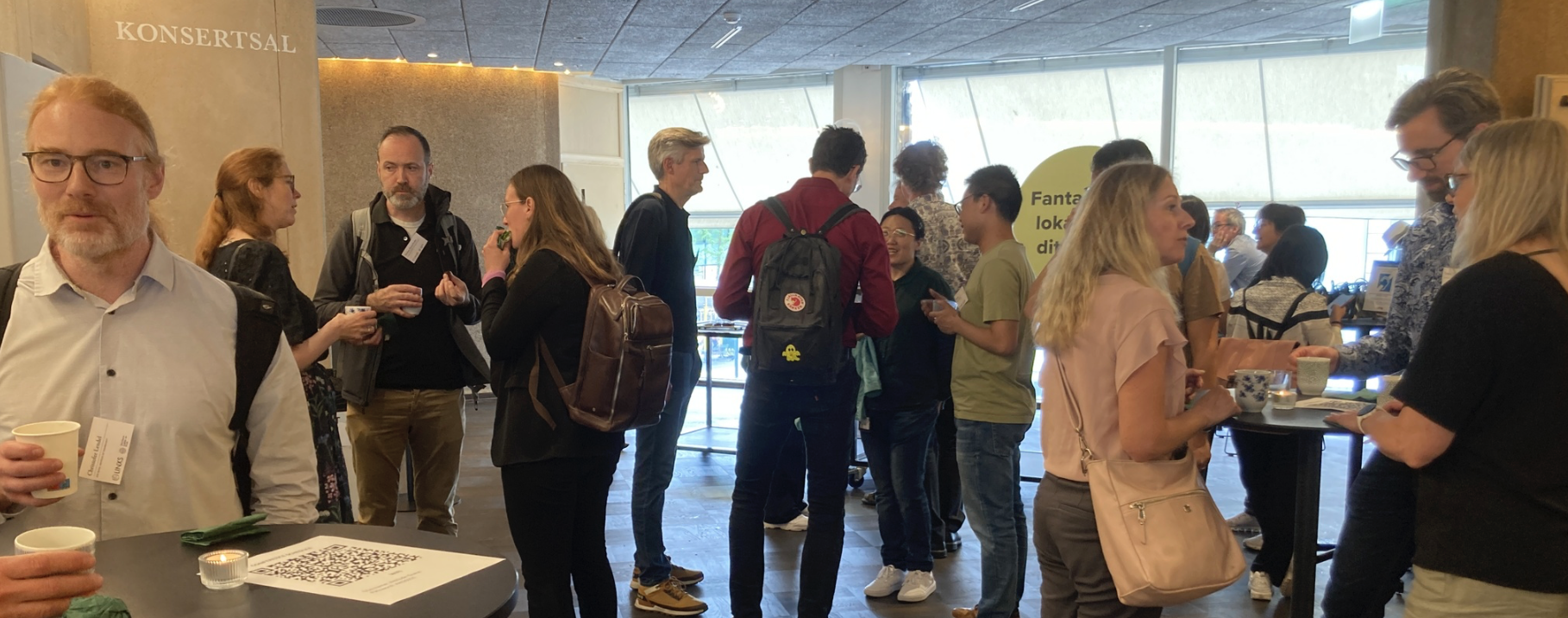The NLF conference connected food research to high level science
Participants at the fifth Northern Lights on Food conference at City Hall in Lund.
This year’s Northern Lights on Food conference, which ran across three days at the end of May, aimed to give space to early career researchers, as well as provide a deep dive into structural food science from multiple perspectives.
Tommy Nylander is Professor in Physical Chemistry at Lund University and NLF theme leader.
Theme leader Tommy Nylander is very glad with how the event turned out. It gathered around eighty participants representing researchers and industry from Europe, Japan and Australia.
– I heard many people say that they thought the scientific content was of even higher quality this year. This feedback is very positive since the Scientific Committee led by Niklas Lorén at RISE took great care to plan the programme, says Tommy Nylander, Professor in Physical Chemistry at Lund University and NLF theme leader.
The programme was very diverse and covered presentations on everything from hierarchical structures of meat analogues, to gastrointestinal digestion, digestion of ethylcellulose oleogels and nano and microstructures of milk proteins. It also included talks on emulsions, wheat bran and peas, as well as the salt distribution in bread - all with a structural food perspective.
– We wanted to present a broad base of what is going on in structural food science at the moment, with a focus on new plant-based foods and proteins. Another aim was to highlight what techniques you can use to solve food related problems, says Tommy Nylander.
Space for early career researchers
The programme also gave ample space for early career researchers to present their research, and get feedback on their work. Providing this opportunity is very important according to Tommy Nylander, in order to grow the user community, and inspire a new generation of food scientists. More scientists that can advance fundamental knowledge on food are greatly needed, he says.
– Food is still expected to be very cheap. At the same time, life style diseases, climate change and population increase are creating an increasing demand on foods that are healthy, affordable and sustainable.
He adds: – One of our challenges as food researchers is that of yet, funding is still quite meager compared to other sectors such as medicine. That is why we need to grow interest both in how food science can solve many of these challenges, and how infrastructures such as MAX IV and ESSS can be of key use.
Of special importance will be to advance structural knowledge of how new, vegan and plant-based foods can be made more nutritious, he notes.
– I believe that X-rays and neutrons can be of great use in elucidating food structures in order to increase nutritional value and appeal of vegan foods: in terms of how they are processed, packaged, digested in the stomach and so forth!
Connecting food research to high level science
So far Tommy Nylander is most proud of how the NLF theme has consistently connected food research to high level science.
– The excitement and new science presented at the conference is a great testament to what we have strived for. We have, in only a few years, managed to create an important platform for people involved in food and X-ray and neutron research to come together. This makes me very proud and happy.
Voices from the NLF conference
Participants and speakers enjoyed the conference, with many highlighting the diverse talks and the broad participation as positives.
Jitendra Mata, instrument scientist, Australian Nuclear Science and Technology Organisation (ANSTO)
– The conference was great. I was especially impressed by all the students and their presentations on X-ray and neutron scattering. They have been thought provoking in the sense that some examples that were presented have not been published yet. It shows that the students are brave and open to get feedback.
Eskil Andreasson, Technology Specialist, Tetra Pak
– It has been excellent to meet both researchers and companies at the conference: it is always nice to see what others are doing and bring back new knowledge and inspiration to Tetra Pak.
– The network you gain is equally as important as the speakers you listen to. It is a great way to establish future collaborations, and start thinking about what you can explore together.
Adrian Rennie, Professor at Department of Chemistry - Ångström Laboratory; Macromolecular Chemistry, Uppsala University
– I participated during the final day. All the presentations I heard were very good. They also show diversity, which is nice.
Namrah Azmi, PhD student, Norwegian University of Science and Technology, Trondheim (NTNU)
– This is my first Food conference being a Food Physicist and I loved it! I presented, and received a lot of valuable input on my work on emulsions. If the conference happened again, I would come!
Aratrika Ray, postdoctoral researcher in the division of glycoscience, KTH
– I have learnt a lot about SAX (Small-angle X-ray scattering), which is good since there is little exposure to SAX in India. I now work at KTH, and it has been great to hear more on this technique to forward my work on nanoparticles and emulsions.


